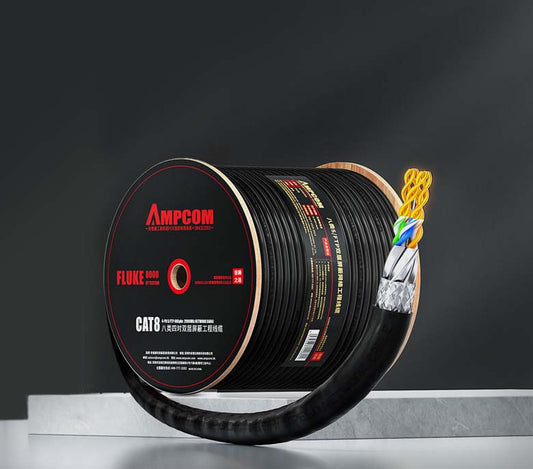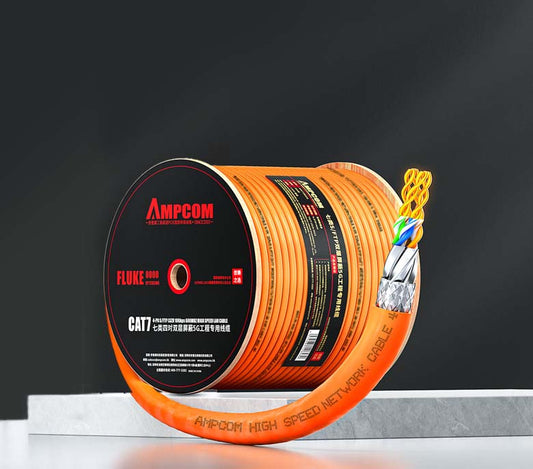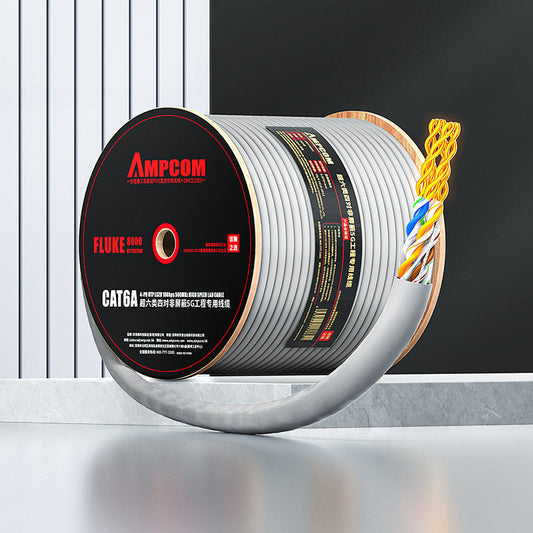Can UTP Perform in Noisy Environments? Understanding the Limits of UTP’s EMI Resistance
In today’s networking landscape, ensuring reliable data transmission is crucial, especially when you're dealing with environments prone to electromagnetic interference (EMI). For most networking needs, Unshielded Twisted Pair (UTP) cables have been the standard choice. However, the question arises: can UTP cables perform well in noisy environments where interference is high, or do they fall short? This article will explore the limits of UTP cables’ EMI resistance and provide insights on when and where to use them effectively.
What is UTP and Why is EMI Resistance Important?
Unshielded Twisted Pair (UTP) cables are widely used in Ethernet networks for their affordability and flexibility. UTP cables consist of pairs of copper wires twisted together to reduce interference from external sources. However, unlike their Shielded Twisted Pair (STP) counterparts, UTP cables lack any additional shielding. This means they are more vulnerable to interference from external sources such as industrial equipment, fluorescent lights, and other electromagnetic fields.
Electromagnetic interference (EMI) can disrupt the signal in networking cables, leading to slower speeds, reduced data integrity, and even network failures. The effectiveness of a cable’s ability to resist EMI largely determines its suitability for various environments.
How UTP Handles EMI in Low-Interference Environments
In environments where electromagnetic interference is minimal, UTP cables perform excellently. Typical use cases for UTP cables include residential networks, small office setups, and environments where the wiring is distanced from significant electrical equipment. In these scenarios, the twisted pairs within UTP cables help cancel out some of the interference, allowing for stable and high-speed data transfer.
When EMI is minimal, UTP cables provide reliable connections with speeds that meet the needs of most standard networking applications, such as web browsing, video streaming, and email communication. The cost-effectiveness and ease of installation make UTP a popular choice in low-interference settings.
The Limitations of UTP in High-Interference Environments
However, UTP cables have their limitations when exposed to environments with high levels of electromagnetic interference (EMI). Industrial settings, manufacturing floors, or locations near heavy electrical equipment can generate significant EMI that UTP cables cannot effectively block. The lack of additional shielding in UTP cables means that interference can disrupt data transmission, leading to issues such as:
- Signal degradation: EMI can distort the electrical signals traveling through the UTP cable, resulting in slower data speeds or poor signal quality.
- Connection instability: High levels of EMI can cause random disconnects and unreliable network connections, leading to frustrating downtime.
- Increased error rates: Data corruption and transmission errors are more likely in noisy environments, especially when UTP cables are used without proper shielding.
In these environments, UTP cables may not be sufficient for maintaining the performance and stability required for critical applications. For instance, in a data center with large-scale network operations, a more robust solution like Shielded Twisted Pair (STP) cables would be better suited due to their shielding that protects against EMI and RFI (Radio Frequency Interference).
When is UTP Still a Good Choice?
Despite its limitations in noisy environments, UTP remains an excellent choice for several scenarios:
- Low-interference environments: As mentioned earlier, UTP works perfectly in homes and offices where EMI is minimal.
- Cost-sensitive applications: UTP cables are more affordable than STP cables, making them a good option for budget-conscious setups.
- Short-distance networking: UTP cables are often sufficient for short-distance data transmission where interference is less of an issue.
If you're running a network in a quiet office environment or need a quick, inexpensive solution, UTP can provide the performance you need without breaking the bank.
Best Practices for Minimizing EMI in UTP-Based Networks
If you're set on using UTP cables in a noisy environment, there are steps you can take to minimize interference and optimize performance:
- Cable management: Keep cables away from electrical equipment, power lines, and sources of electromagnetic interference whenever possible.
- Proper grounding: Ensure that your networking equipment is properly grounded to reduce the impact of external electrical noise.
- Use of network switches with built-in interference resistance: Some modern network switches come with features designed to help minimize the effects of EMI on your network.
Even in high-EMI environments, these practices can help reduce the negative effects on UTP performance and ensure more stable data transmission.
FAQ: Frequently Asked Questions
1. Can UTP cables be used in high-interference environments?
UTP cables can be used in environments with low interference, but in high-EMI areas, their performance can degrade. In such environments, STP cables with added shielding are typically a better choice.
2. How do I know if my environment is suitable for UTP cables?
If your network is located in an office or home with minimal electrical noise, UTP cables should work well. However, if you're in a factory or near heavy machinery, consider using STP or other shielded cables.
3. How does the cost of UTP compare to STP cables?
UTP cables are generally less expensive than STP cables. This cost difference makes UTP an appealing choice for low-budget networks in environments with minimal interference.
4. Should I upgrade to STP cables for my current setup?
If you’re experiencing network issues like slow speeds or dropped connections, it may be time to upgrade to STP cables, especially if you're in a noisy environment. For office spaces without interference issues, UTP is still an excellent choice.
5. How can I improve the performance of UTP cables in noisy areas?
To improve performance, use cable management techniques, ensure proper grounding, and avoid running cables near electrical sources. In some cases, using repeaters or switches with built-in EMI resistance can help.
6. Can I use UTP cables for long-distance connections in noisy environments?
For long-distance connections in high-interference environments, UTP cables may not perform well. Consider using STP or fiber-optic cables for longer runs or more challenging conditions.
Conclusion
While UTP cables are a cost-effective and efficient solution for most networking environments, their performance in high-EMI settings can be limited. Understanding the limits of UTP’s EMI resistance and knowing when to use alternative solutions like STP cables is essential for maintaining a stable and high-performing network. For homes and offices with minimal interference, UTP is a great choice. However, for industrial or electrically noisy environments, investing in shielded cables will ensure a more reliable network experience.



